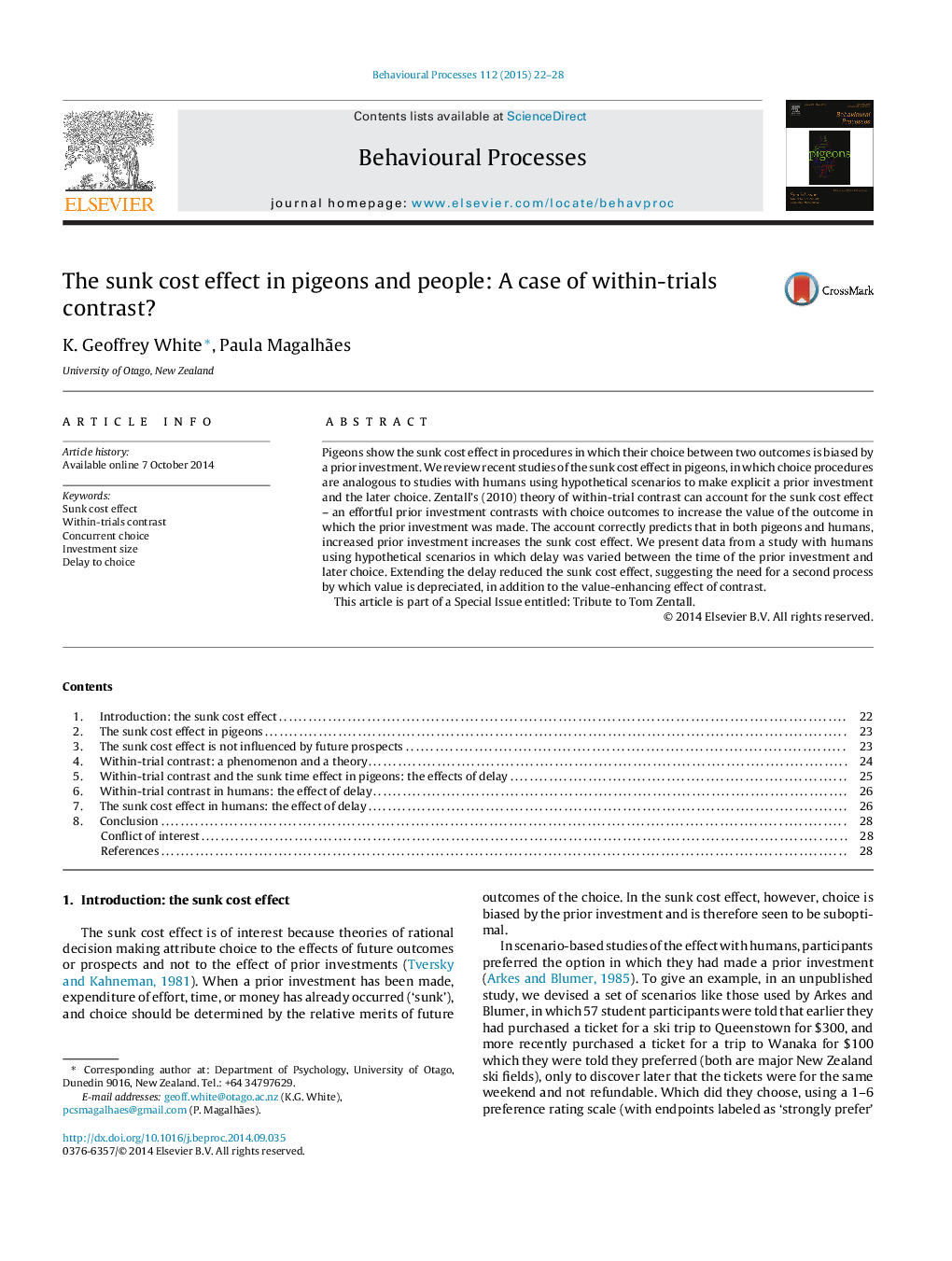| Article ID | Journal | Published Year | Pages | File Type |
|---|---|---|---|---|
| 2426631 | Behavioural Processes | 2015 | 7 Pages |
•Pigeons’ choice between two outcomes is biased by a prior investment – the sunk cost effect.•An analogous sunk cost effect is demonstrated in humans with hypothetical scenarios.•Zentall's (2010, 2013) theory of within-trial contrast can account for the sunk cost effect.•Increased prior investment increases the sunk cost effect as predicted by within-trials contrast.•Reduced sunk cost with increased delay to choice suggests the need for a second process.
Pigeons show the sunk cost effect in procedures in which their choice between two outcomes is biased by a prior investment. We review recent studies of the sunk cost effect in pigeons, in which choice procedures are analogous to studies with humans using hypothetical scenarios to make explicit a prior investment and the later choice. Zentall's (2010) theory of within-trial contrast can account for the sunk cost effect – an effortful prior investment contrasts with choice outcomes to increase the value of the outcome in which the prior investment was made. The account correctly predicts that in both pigeons and humans, increased prior investment increases the sunk cost effect. We present data from a study with humans using hypothetical scenarios in which delay was varied between the time of the prior investment and later choice. Extending the delay reduced the sunk cost effect, suggesting the need for a second process by which value is depreciated, in addition to the value-enhancing effect of contrast.This article is part of a Special Issue entitled: Tribute to Tom Zentall.
